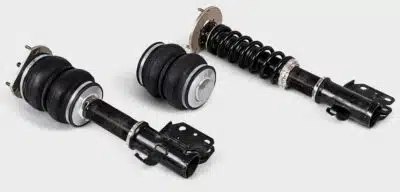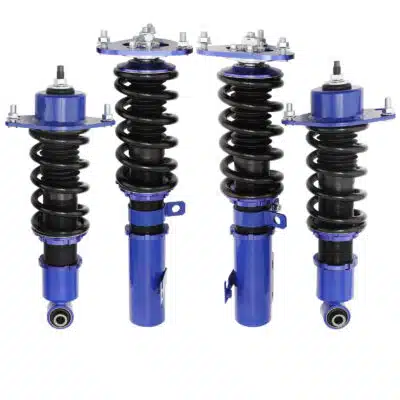10
Sep
2018
Use the Vehicle Finders to quickly find products for your vehicle.
26
Nov
2025
New TA Technix kits added
We've recently added 2 new TA Technix kits to our website: Ford Fiesta Mk1 and Audi 100 C1.
The Mk1 Fiesta launched in the UK in 1977 and was the first Ford car to feature a transverse engine and front-wheel-drive layout. Praised for its affordability and low running costs, it was an instant success in the fast-growing supermini category - a trend accelerated by the 1973 oil crisis. Over a million Mk1 Fiestas were sold during its production run!
As for the Audi 100, it has got quite a history. Originally developed in secret by Ludwig Kraus, the chief engineer at Auto Union, which was acquired by Volkswagen in 1964, defying a direct order from then-VW boss Heinrich Nordhoff and named in reference to the 100 PS (74 kW) horsepower output of its engine, the car became a huge success with demand outstripping supply. Over 800 000 units were produced and the C1 helped to establish Audi's reputation for high-quality vehicles. Why had Nordhoff forbidden the development of any new Auto Union vehicles? Turns out it was his lack of faith in the product team.
Why choose TA Technix? The paths of AirRide and TA Technix first crossed at a car show many moons ago, and we were impressed by their engineering and value for money. The drop is impressive, the handling is maintained, and the kits are the cheapest in our AirRide range, making them perfect for budget conscious racer boys and girls.
We try to add the latest kits to our website, however, if you can't see what you're after, please call or email. We can supply any TA Technix kit, as well as spare parts.
Please note that car kits/spares are not held in stock and would need to be ordered in - contact us for lead times.
Need more information? Call us at 0800 772 0315 or send an email to ENQUIRIES@AIRRIDE.UK!
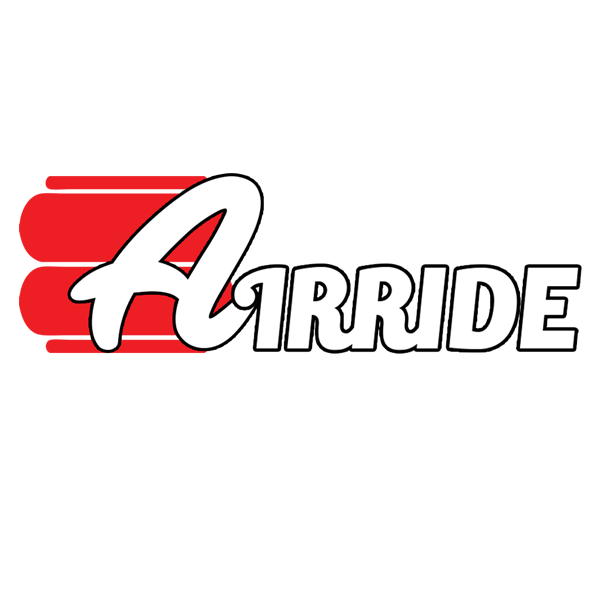
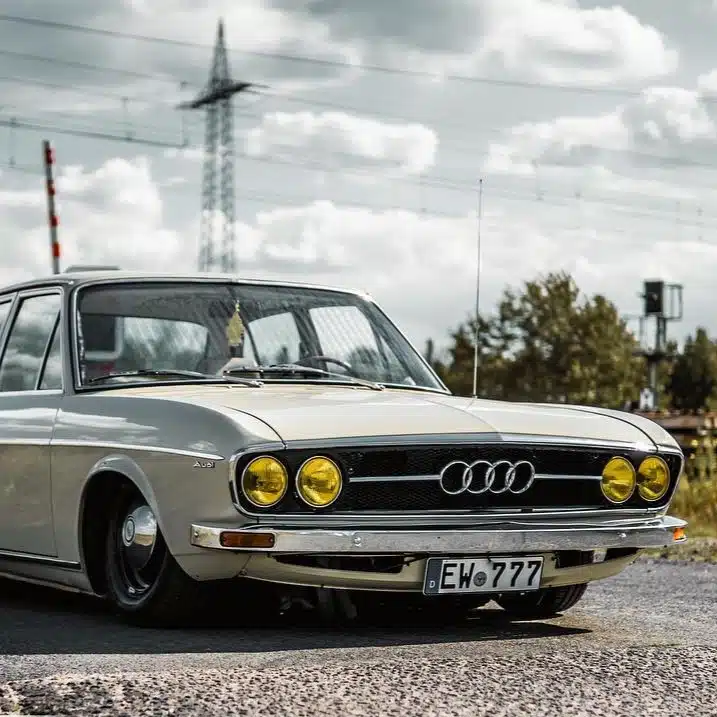
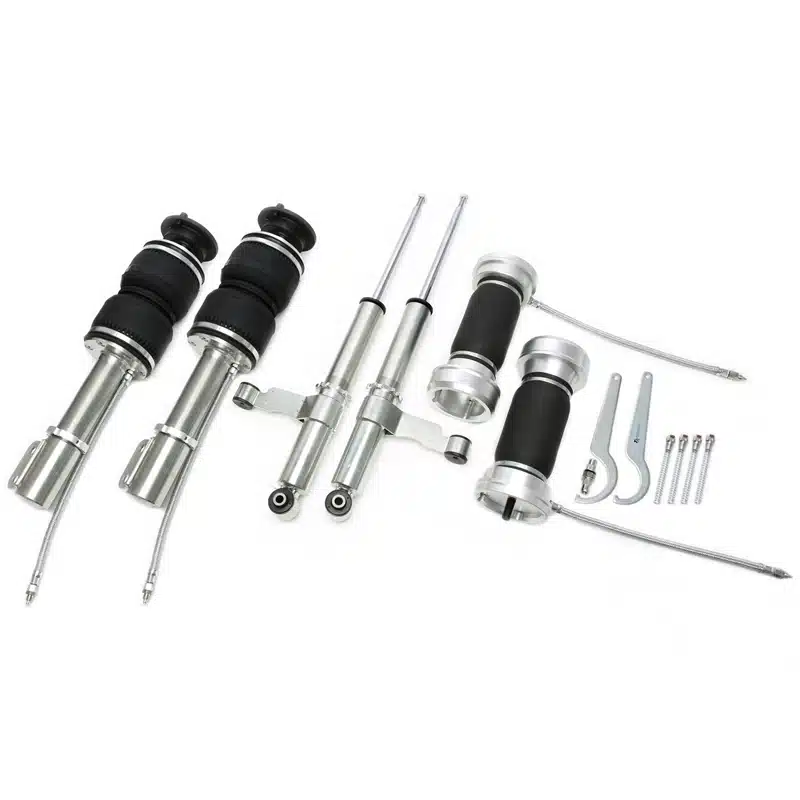
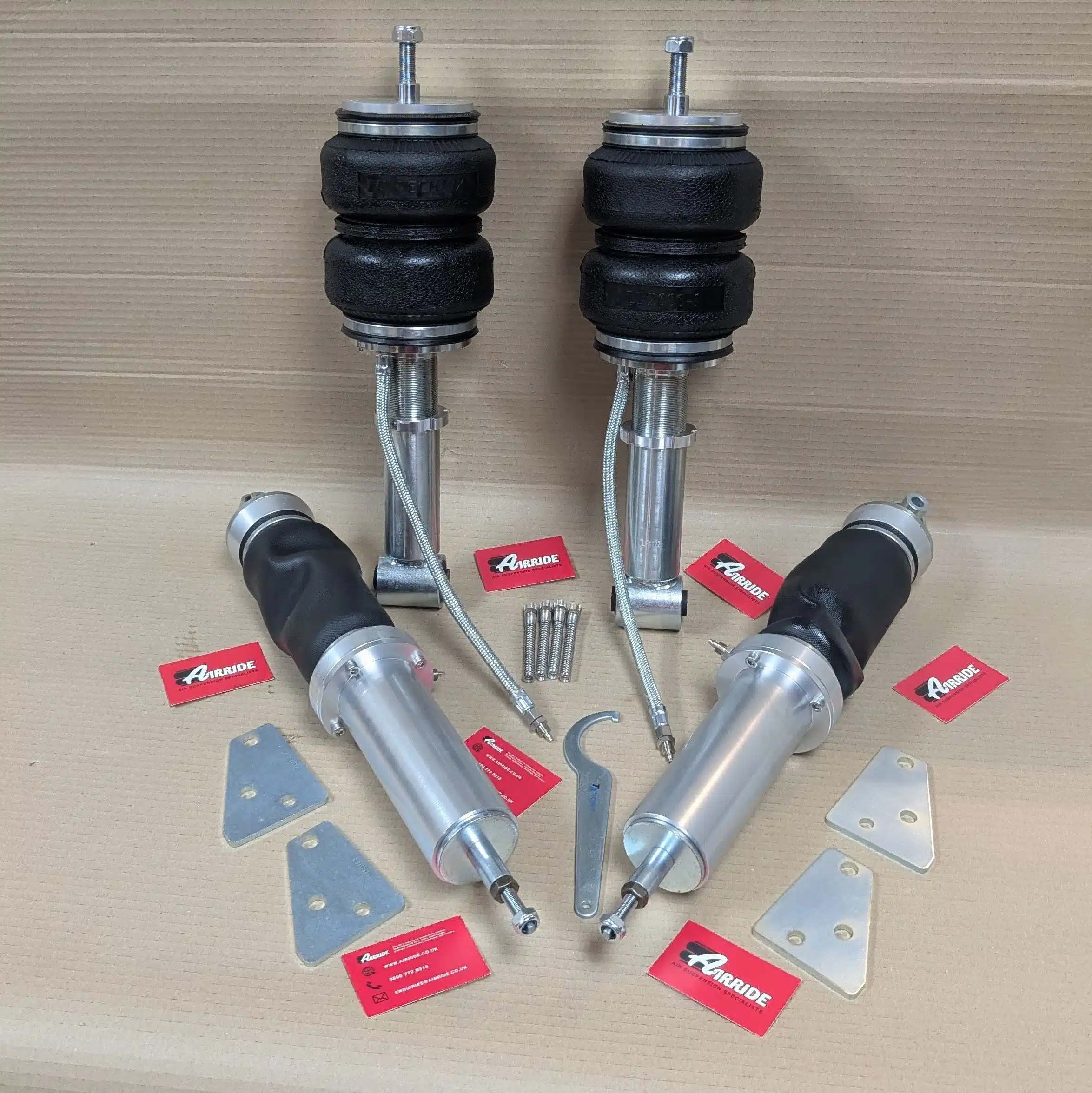
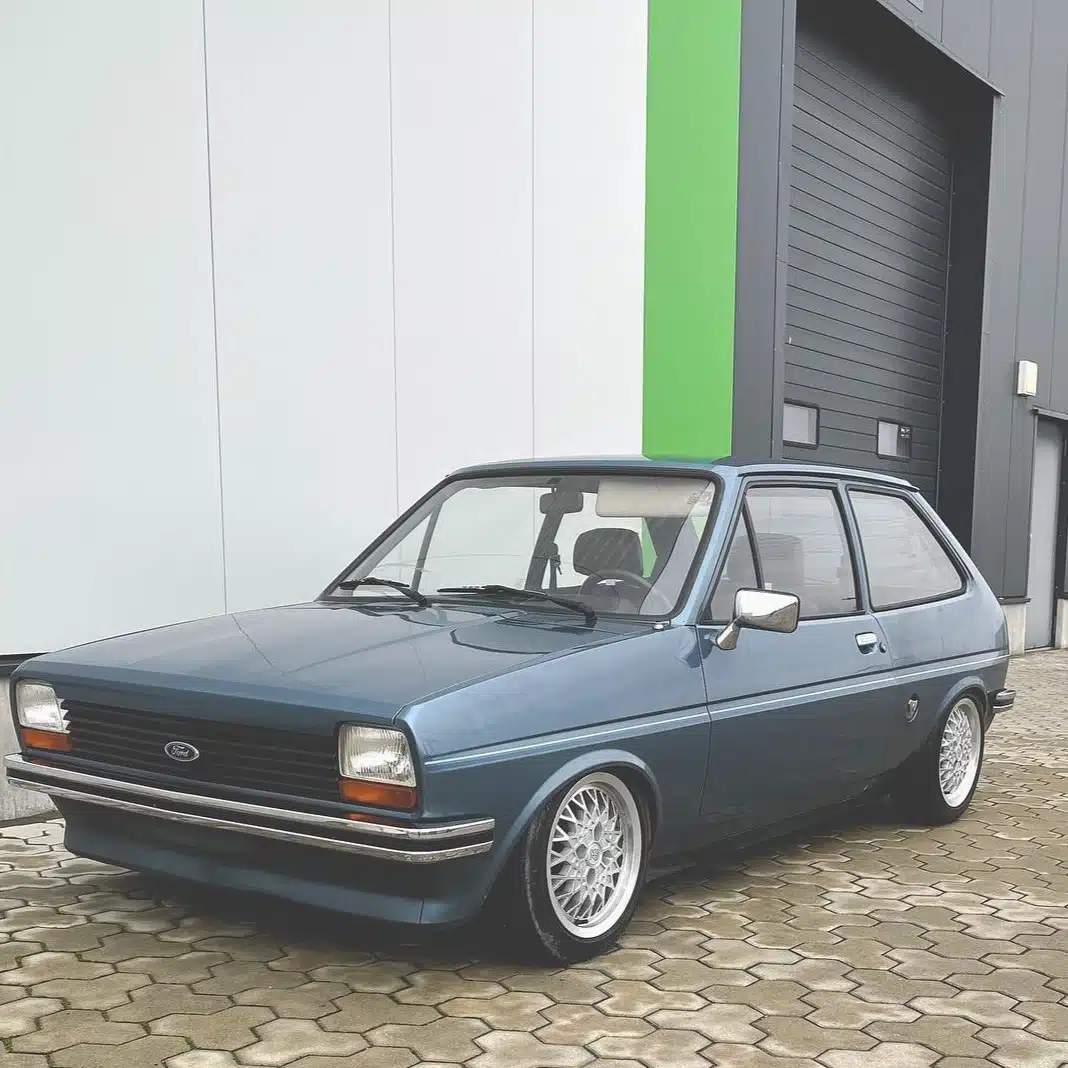

25
Oct
2025
Twin Tube or Mono Tube



Monotube vs Twin Tube
Many air suspension and coil-over suppliers make a big deal out of using monotube shocks, leading to the assumption that they must be better. But is that really the case? The truth is, it's not about which is better - it's about which is better for your specific needs.
What’s the Difference?
Externally, there’s no visible difference between monotube and twin-tube dampers. Internally, however, they are quite different. To summarise:
- Twin-tube dampers have two internal tubes.
- Monotube dampers have a single tube.
This internal difference impacts manufacturing costs, performance characteristics, and durability. If you're curious about the technical details, you can find plenty of resources online, including diagrams and internal images. (Note: These are more accurately called dampers because they dampen motion rather than absorb shocks.)
Cost and Engineering
When producing a small number of dampers, monotube designs are usually more cost-effective due to fewer components and simpler operations. However, the precision required for monotube manufacturing makes them far more expensive at scale. Conversely, twin-tube dampers are cheaper to produce in large quantities and are usually lighter due to not needing the very thick body in their construction.
Durability
Monotube dampers rely on precise sealing technology to keep oil and gas separate within the single tube. Any slight imperfections in the outer tube will lead to failure, which can occur during regular road use or when mounting fixtures like brake pipes or sensors are welded onto the tube.
Challenging environments, such as normal road conditions with potholes, kerb strikes, or rough surfaces, can expose monotube dampers to these vulnerabilities. Twin-tube dampers, on the other hand, have an additional outer shell that protects the inner tube, making them more resistant to external damage from road debris or impacts. Monotube dampers are regularly damaged by potholes and kerbs, whereas twin-tube units are less prone to damage in this way.
Advantages and Disadvantages
Monotube Dampers
Advantages:
- Superior control and fine adjustment.
- Run cooler under extreme/track use.
- No cavitation (foaming) as oil and gas are separated.
- Can be installed at any angle, including upside down.
- Firmer ride - a benefit on the track.
- Less susceptible to shock fade under heat.
- Often offer finer ride height adjustment, appealing to those prioritising aesthetics or custom setups.
Disadvantages:
- Less durable for everyday road use.
- More expensive to produce at scale.
- Shorter stroke length.
- Firmer ride - less comfortable on the road.
- Adjustability, while possible, often requires jacking up the vehicle and working underneath, which may not be practical for many users.
Twin-tube Dampers
Advantages:
- Smoother, more comfortable ride.
- Longer stroke length for increased travel, which contributes to a more comfortable ride.
- Lower production costs.
- More forgiving of external wear and tear, such as damage or impacts.
- Greater durability for road use, especially in challenging environments.
- Quieter operation compared to monotube dampers.
Disadvantages:
- Must be installed upright (cannot be inverted).
- Retain heat, leading to potential performance drops under extreme/track use.
- Typically lack adjustment options.
- Can suffer from cavitation under extreme conditions, reducing damping performance.
Air Suspension-Specific Considerations
One key factor for air suspension is the natural cushioning effect provided by the air springs themselves. Even monotube dampers, typically marketed as “performance” options, will often provide a smoother ride than traditional coil springs when paired with air suspension. However, for most road users, the additional comfort and durability of twin-tube dampers make them the better choice.
So, Which Is Best?
Manufacturers that sell only one type of damper often claim theirs is superior. Those offering both typically provide a balanced view of the pros and cons, leaving the decision to the buyer. For road use, twin-tube dampers are generally the better choice. They are more durable, forgiving of impacts, and can handle everyday challenges like potholes or kerb strikes without failing. This is why nearly all mass-produced vehicles use twin-tube dampers. For car use the "best" option depends on your use and even driving style. For vans, and motorhomes twin tube shocks are almost always the way to go.
Our Recommendation
At AirRide, we design all our products for road use. For this reason, our dampers exclusively feature twin-tube designs, providing the durability and comfort needed for everyday driving.
We also stock monotube-based kits from brands like AirLift Performance, AirRide Gold, and TA Technix. These are typically marketed as “performance” kits – think track-focused, which often translates to less comfort on the road. That said, they still deliver a smoother ride than traditional coil-overs due to the air springs.
When you contact us to discuss a kit, we’ll ask what you’re looking to achieve with your air suspension. This helps us recommend the best option for your needs, ensuring those seeking a more comfortable ride don’t end up with a performance-oriented monotube kit that won’t deliver the desired results.
04
Sep
2025
Builders Series discontinued
The AirLift Performance Builders Series - universal struts for custom projects - have been discontinued. This follows a number of other ALP products that are no longer available and suggests that the company wants to focus on selected core products. Also, they recently launched the ALP 4 digital controller that will eventually replace the 3P. Sometimes ALP bring discontinued products back after a while so perhaps the Builders Series will return at some point? We hadn't used them ourselves as they're not suitable for vans and van kits are the bulk of our development work these days, but the Builders Series struts seemed to be versatile, fairly priced products. We don't have any of the struts in stock and won't be able to supply them.
We always try to suggest an alternative option when we can so feel free to contact us regarding your project. We would need to know what vehicle it is (based on an existing vehicle or completely custom?), the available space for bags and what you're trying to achieve with air suspension. You can call us at 0800 772 0315 or email us at ENQUIRIES@AIRRIDE.UK

15
Aug
2025
O rings
We did a blog post about O rings some time ago. Due to an increased number of enquiries, we would like to clarify that we only supply TA Technix O rings. If you've got any other kit or require custom ones, there are many companies in the UK that can supply them. We ourselves use Bearing Boys in Rackheath just outside Norwich in Norfolk (they also do mail order). You will need digital calipers (£5-£10 on ebay etc) to properly measure your old O rings.
As mentioned previously, O-rings typically don’t require replacement unless the struts have been disassembled or the vehicle has been stored for an extended period. If you require technical support please call us at 0800 772 0315 or send an email to ENQUIRIES@AIRRIDE.UK, we're happy to advise.
10
Jul
2025
Lead time
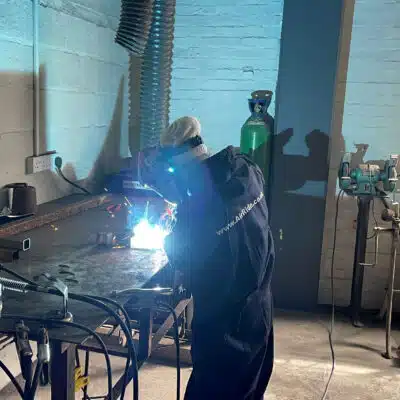
Please note that we are a manufacturing workshop. When it comes to load support kits and bags, we strive to keep our bestsellers on the shelf ready for same or next day dispatch whereas front struts and front and rear lowering kits are always made to order. Air management parts (controller, compressor, tank) are usually in stock or can be obtained within a few days.
Given how much the pace of life has accelerated in the last few years and the rising customer expectations, we dispatch as fast as we can but we’re not Amazon and can’t guarantee a next day delivery. Small items are dispatched with Royal Mail on either 24 or 48 hour service and larger items are shipped with UPS who usually deliver within 1-2 working days. Sometimes we use Parcelforce and, again, select a fast service.
We don’t do drop shipping. When you place an order with us, you get the parts from us. We don’t outsource storage, packaging and shipping to a third party, and we certainly don’t throw together low-quality parts from random sources. We care about quality and safety and only supply parts we would use on our own vehicles.
Manufacturing times vary and we discuss this with our customers before they place an order. Some kits take dozens of hours to make, others take hundreds. Some kits are so complex we quote 16-26 weeks. Lead times are given in good faith and are not guaranteed – in a manufacturing environment, tasks can and do overrun. This is something that is hard to explain as our customers only see the end product and not the dozens of steps and parts that go into making them. We have considered creating “behind the scenes” content for our social media to better explain the work and skills that go into making our products but a generic video wouldn’t show much and a detailed one would a) be too dangerous to film given the steps involved and b) give away too much information about our designs.
To sum this up, our products take time to make but they’re worth the wait: we build products that are built to last and genuinely solve the various problems our customers encounter with their standard suspension.
06
Jun
2025
Mercedes Sprinter 4×4
Recently, we've noticed an increase in enquiries about all wheel drive Sprinters so we thought we'd make a quick blog post about this configuration of the famous van. We offer 2 different load support kits for the 4x4, depending on the axle tube diameter. Most 4x4 Sprinters are 400/500 series with a 4 inch axle tube but there is also a very rare 300 series model that has a 3 inch axle tube. We do kits for both. As all our load support kits, both feature heavy duty bags and brackets and are therefore perfect for motorhomes, camper vans and heavily loaded vans, restoring ride height, stabilising your Sprinter, and improving ride quality and handling.
Is your 4x4 is 300 series? Click here. If you have the 400/500 van then the kit you need is shown here.
Need more information? Please call us on 0800 772 0315 or send an email to ENQUIRIES@AIRRIDE.UK
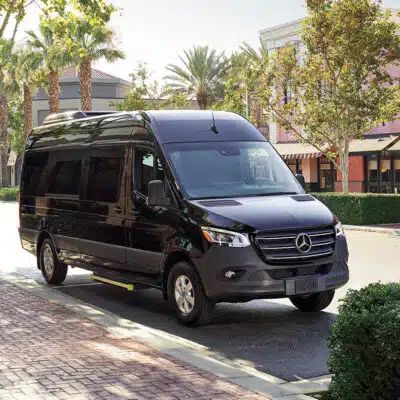
13
May
2025
Air suspension for classic cars
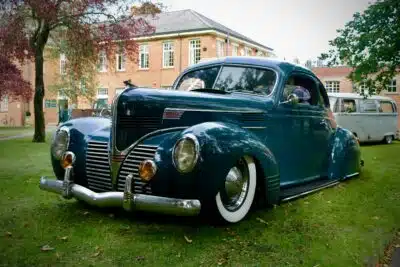
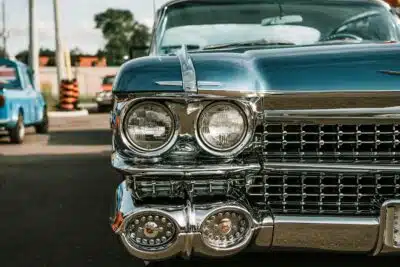
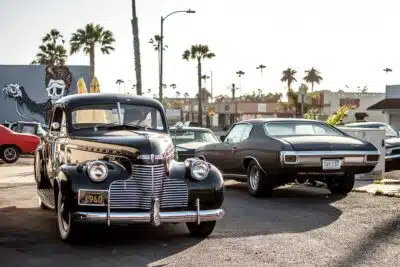
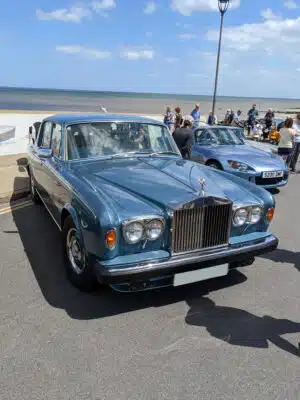
Kits for classic cars is something we get enquiries about nearly every week. We have good news and bad news: the good news is that it's possible. The bad news is that, unless it's a Merc from the 1960s onwards, it's very unlikely to be bolt on.
For most classic cars we can supply universal parts. There are kits for some classic American cars that we can import from the US, but they tend to involve at least some fabrication as this is what our cousins across the Pond are accustomed to. Also, American pricing for air suspension parts is in an entirely different league as many of you have discovered yourselves...
When we say 'universal' we don't mean 'will magically bolt onto every vehicle'. No, it's universal as in 'won't fit any vehicle directly'. Universal kits will require fabrication by the customer or their installer. YOU, the customer, need to tell us what you need. Now, this is the bit where a misunderstanding tends to occur. The typical reply tends to be: "I need bags and other parts to put my car on air."
That’s like phoning up a garage and saying you need a new tyre instead of asking for price and availability on 185/65 R15. Airbags, just like tyres, have sizes. So, for us to supply the bags, we need to know how much available space the vehicle has for airbags: the outer diameter of the front spring and clear area around the front spring. Also, all airbags require at least a 1-inch clearance all the way round. Any less and the bags will likely touch, fail and need replacing (not a warranty issue!!).
To sum this up: you need to tell us exactly what you need from us to get you started and then fabricate the rest yourself/have your installer to do that for you.
We’ve mentioned it in another post, but we’ll mention it again… Designing an air suspension kit involves far more than just putting parts together. It requires a certain amount of engineering and trial and error. On some vehicles, clearances are really tight, and it might be tempting to use a smaller bag that is easier to fit instead of the bag that is right for the job – don’t do that as it renders the whole project pointless when it has a terrible ride quality. Choose the right bag for the job, not the easy bag for the install.
Another common mistake after wrong parts and installation errors is skimping on quality. Yes, air suspension is expensive to set up but if the cost is a turn off then it’s better to leave the car as it is than buy cheap, unreliable parts. When air is the sole suspension of a vehicle you absolutely need the best quality parts. We’ve had an increase in enquiries recently where people complain that their compressor has failed or their manifold/remote is not responsive anymore. Just because the (cheaper) compressor or controller looks similar to that of a reputable brand it doesn’t mean they’re the same quality! To draw a comparison: Apple users know full well that they pay a lot for the brand but, in return, they’re getting great products and excellent customer service. It’s the same with air suspension parts: buy the original, buy quality. Don’t try to save money going for a knock off or, even worse, a knock off of a knock off – sooner or later any savings will be eaten up by repair bills and the cost of replacement parts.
OK, back to the main topic….
Please note that air suspension is not a magical solution to all problems and no kit can do everything. Therefore, it must be decided from the very beginning what is the main thing you want air suspension to do. Is it to improve comfort? Slam the car to the ground? Increase clearance to avoid speed bumps and tackle steep driveways? All these requirements can usually be met, but not at the same time or by the same kit.
As for controlling the ride height, air management packs are not vehicle specific so any can be installed – whether it’s the Manual Paddle Controller or the 3P Digital Controller pack is a preference thing, just as having 1 or 2 compressors.
The universal parts for cars are available here.
Need more information? Please call us on 0800 772 0315 or send an email to ENQUIRIES@AIRRIDE.UK
We are happy to offer you a quote but you need to supply information on sizes, designs and pictures. Don't expect us to be able to put a package together for a 195x model xyz without some input from you.
17
Apr
2025
Happy Easter 2025
The Sales Office will close at 5 PM today and reopen at 9:30 AM on Tuesday April 22. Our call centre staff will also be on an Easter break so there will be no phone service during the Easter weekend. You're welcome to email and we'll respond to general enquiries next week.
Automated in stock orders placed via our website during this time may be dispatched over the Easter period. Please note that some courier companies, whilst accepting shipments, will not deliver them on public holidays.
We know that many customers install products on weekends and bank holidays so if you require technical assistance then please email us at ENQUIRIES@AIRRIDE.UK using the subject ‘Technical’ and we will endeavour to reply to your query within 24 hours.

08
Apr
2025
We can supply any TA Technix/AirLift Performance kit
Can’t see the kit you’re interested in on our website? Get in touch as we can supply any TA Technix kit! When it comes to our website listings, we add the most popular kits first although we recently added the Trabant kit for fun.
We can also supply TA Technix kits with adjustable damping - prices on request.
TA Technix offer Germany quality and reliability at a budget friendly price. Their kits are designed to slam the car to the ground and offer a sporty ride. They also do some van kits, but they’re designed for lightly laden Transporters. Contact us if you need air suspension for a camper as that would require a heavy-duty kit.
Likewise, we can supply AirLift Performance kits that are not on the website provided they’re still being made. The company has been streamlining their production in recent years and quite a few kits have been discontinued. As the name suggests, these kits focus on performance but they’re more adjustable than TA Technix and generally use bigger bags.
Please note that car kits or any spares are not held in stock and would need to be ordered in.
Need more information? Call us at 0800 772 0315 or send an email to ENQUIRIES@AIRRIDE.UK!

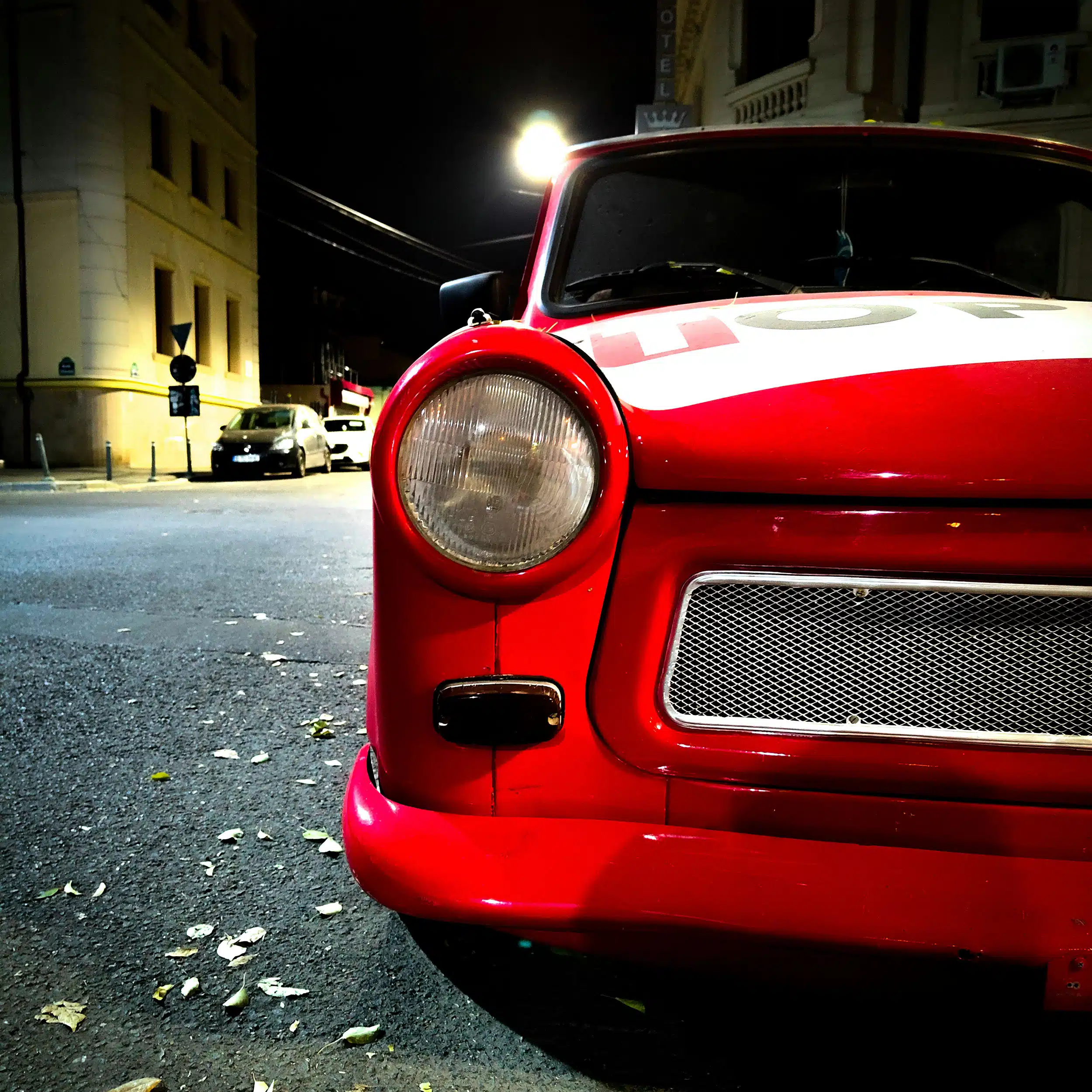
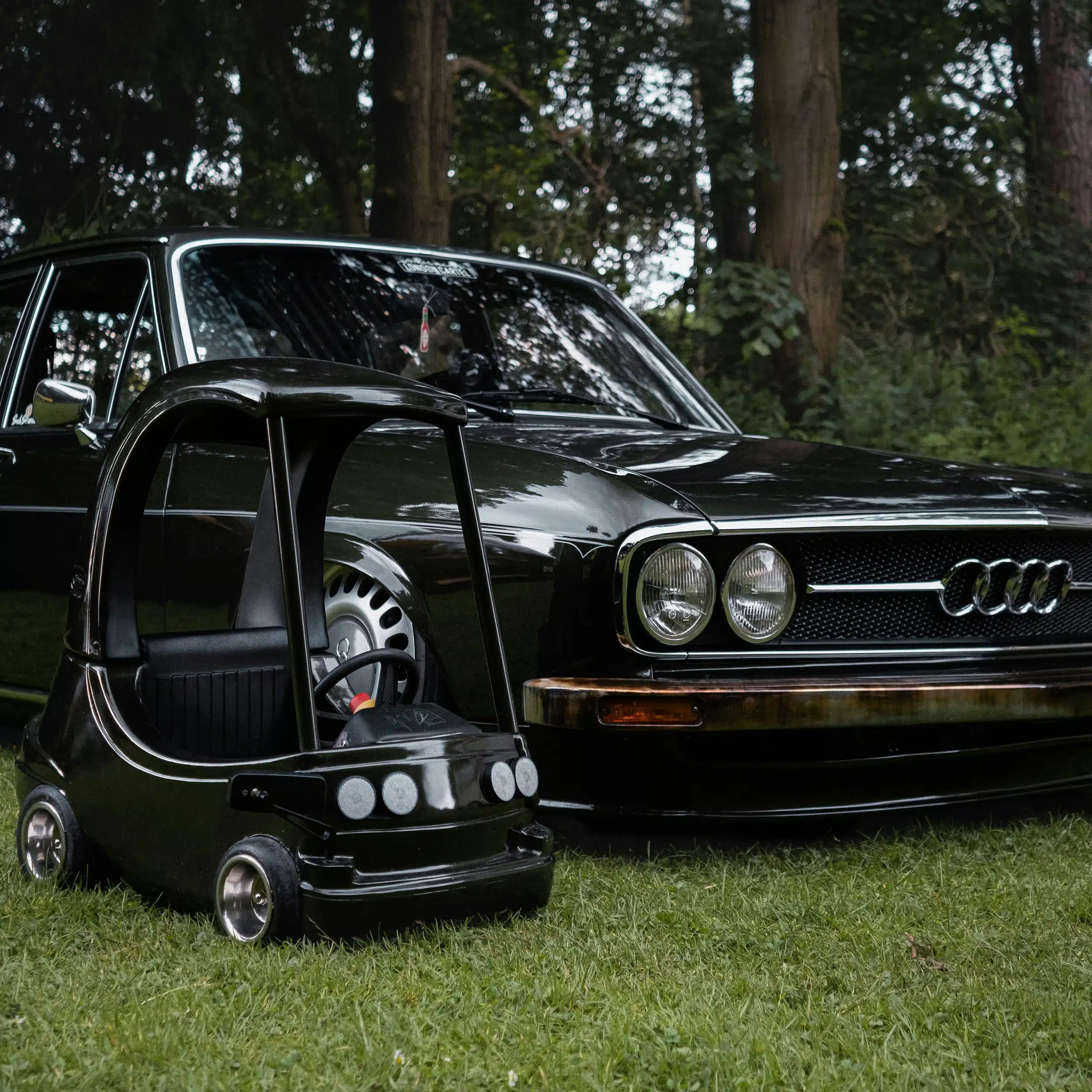
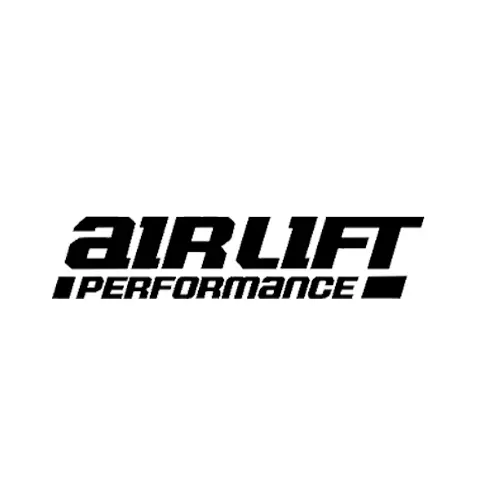

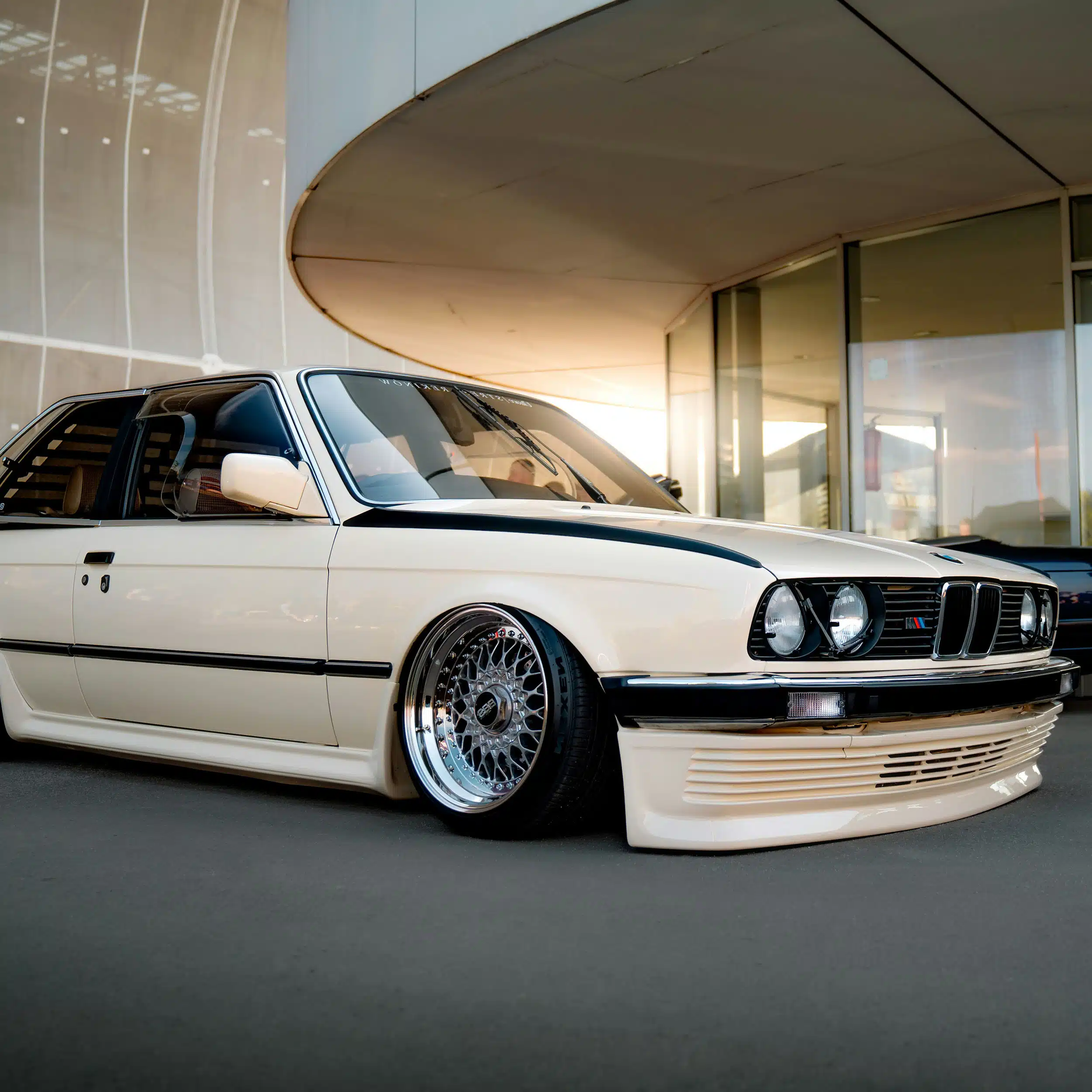
20
Mar
2025
Can you repair 3P?
We receive enquiries about this on a regular basis and therefore decided to put together a blog post.
One of the most commonly asked questions is whether we can repair manifolds. We can’t. If we receive a warranty claim we simply send the manifold to the manufacturer, and they supply us with a new one. AirLift Performance does not offer any 3P repair kits either. If the manifold is not working and is under warranty it needs to be sent back to ALP. Sometimes people open the manifolds to try and establish the problem themselves. This invalidates warranty and there are no spare parts available.
AirLift Performance used to offer a Limited Lifetime Warranty, but this was not recognised under UK law for being too ambiguous and in 2021 the company updated it. Starting from 03/09/2021, 3P/3H/3S will have a 2 year warranty if purchased without AirLift Suspension and a 4 year warranty if purchased with a front and rear suspension kit from AirLift Performance.
The warranty, pre or post 2021, only applies to the original buyer. This is one thing to keep in mind when buying vehicles with aftermarket air suspension to help determine whether it’s a vehicle for you. 3P spare parts range from £12.50 for a special USB cable (a regular one won’t work) to £1500 for a new manifold.
A user guide, if you don’t have one, is available on ALP’s website or we can email you a copy.
Occasionally we get asked about parts for Autopilot V2, ALP’s air management option before 3P/3H was launched in 2015. AirLift Performance does not sell any spares for V2 anymore and, since we never sold this controller option ourselves, we have nothing available for it. It was a great product for its time and 3P is its massively improved version. Depending on the condition and make of the compressor and tank they could be reused but the manifold and the remote would need replacing with 3P.
If you need more information, call us at 0800 772 0315 or email us at ENQUIRIES@AIRRIDE.UK
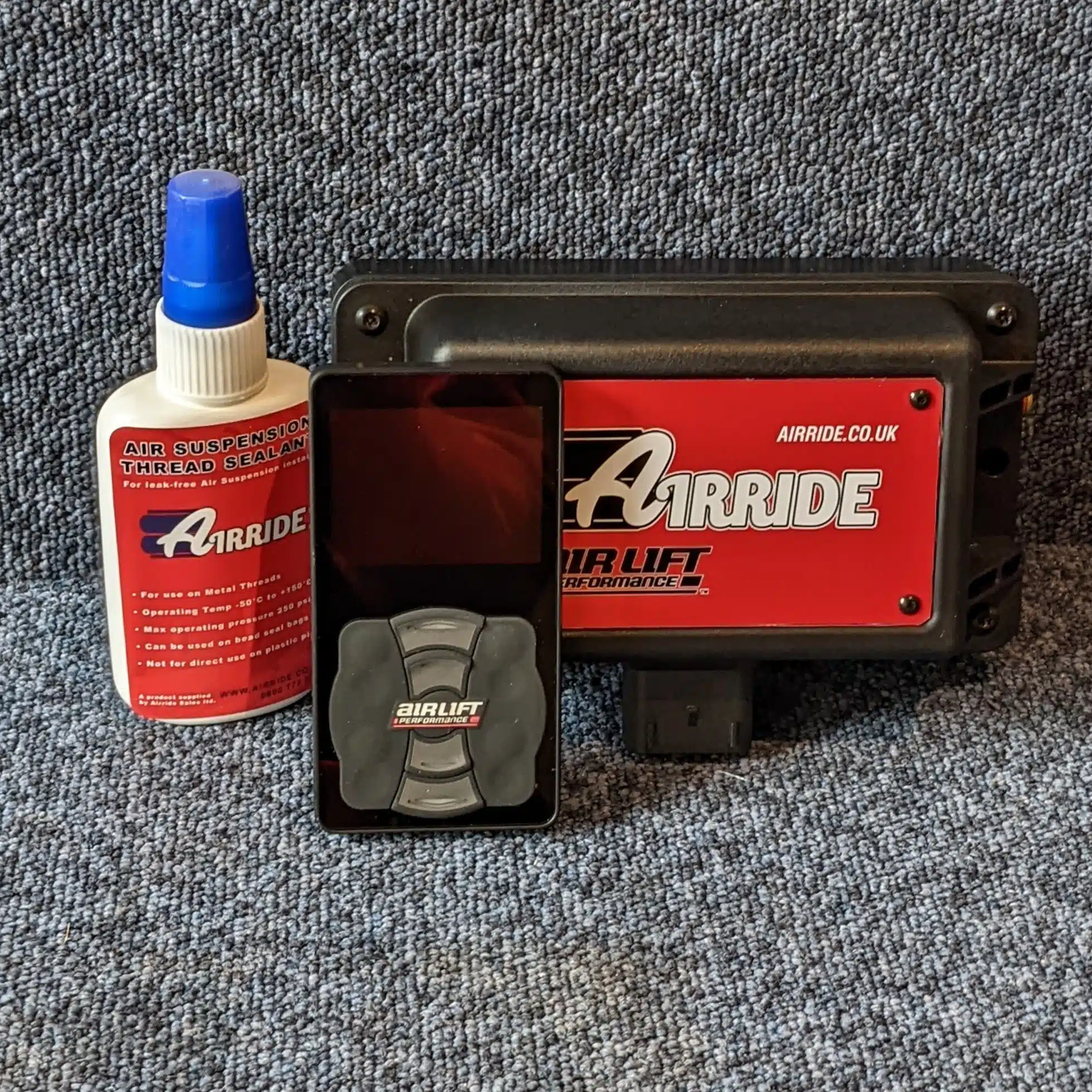
28
Feb
2025
Kits for Ford campers and motorhomes
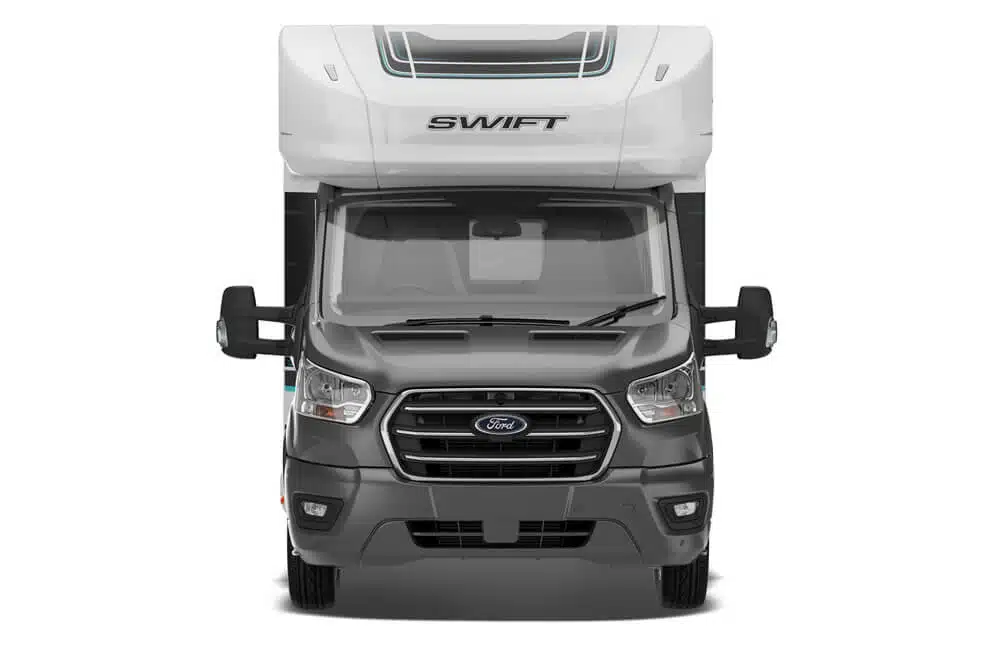
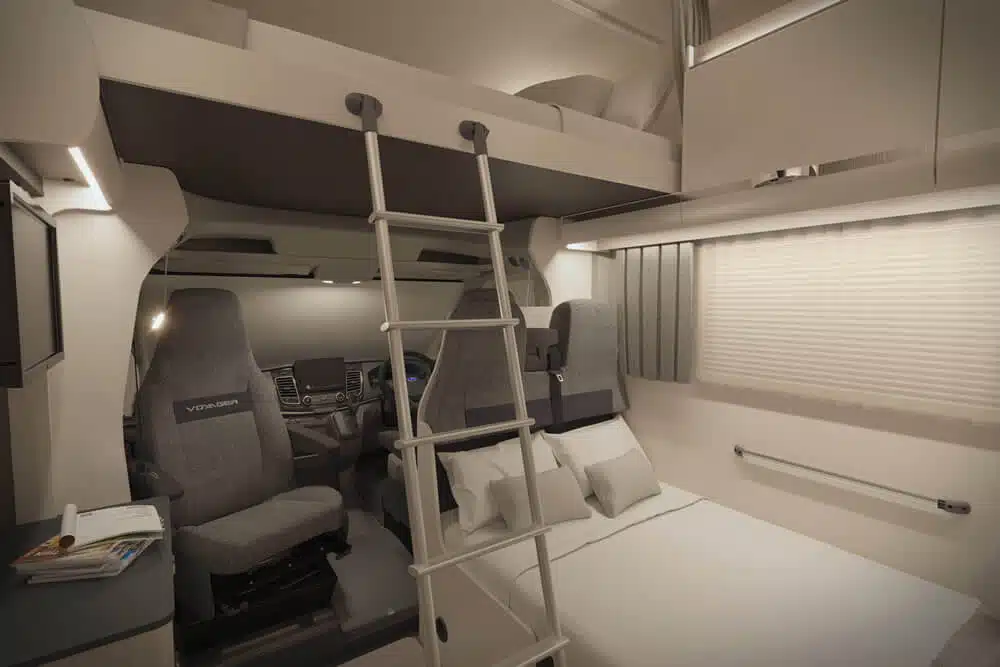
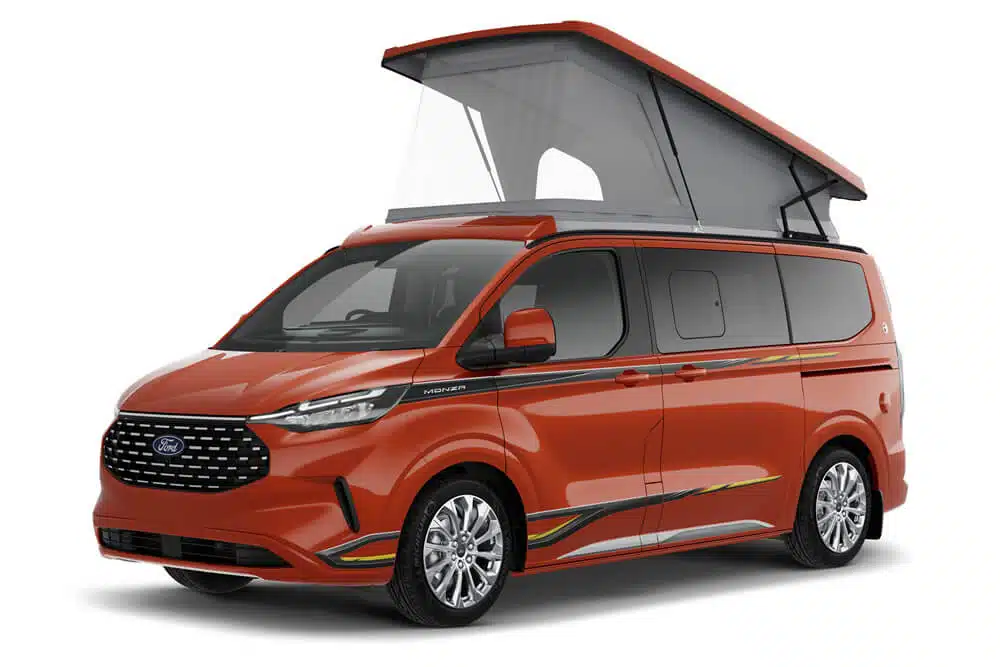


Just a few years ago campers were dominated by VW Transporter and Mercedes Sprinter whereas Fiat Ducato reigned supreme when it came to motorhomes. These days we see more and more Ford based campervans and motorhomes. Are you among the owners of these vehicles? We can help!
Ford Transit Custom / Swift Monza
Whether you want to equip your camper with a front and rear lowering kit or just a rear load support kit, we've got you covered! The load support kit is a cost effective solution to improve ride quality and lift the camper up and is installed in addition to the leaf spring.
These kits only fit Gen 1 Transit Custom based campers, contact us if yours is Gen 2.
Ford Transit campers and motorhomes
Swift and Chausson are among companies that have added Ford based motorhomes to their range. If you have one of those, the first thing we need to know is whether your vehicle is RWD or FWD as they require different bags and brackets. RWD vehicles with a single rear wheel have several slightly different chassis designs and we would need a picture of the rear axle/bump stop area to identity which variant of the kit fits your Ford. The twin rear wheel kit is available here.
Load support for FWD is available here.
Please note that these are load support kits and they can only lift the camper/motorhome up and lower it back to the original height. Load support kits cannot go any lower than the stock height.
Require air suspension for the front? The front struts are available HERE.
Key Features:
- Heavy Duty Double-Convoluted Boss Air Bags: Standard in every kit for exceptional durability and performance. Rated to 1100 Kg per side per side above axle capacity - more than you'll ever need in real life! Depending on the vehicle, they will be either Boss Extreme Series 2500 or Boss 2600.
- Heavy-Duty Steel Brackets: Ensures a secure, reliable installation. Made by us here in Norwich using British steel.
- Schrader Valves: For easy inflation and deflation.
If you wish to have an in cab controller, various onboard air management options are available from the drop-down menu. Please note that air management is required if your camper/motorhome has air on all four corners.
Why Buy From Us?
- 25 years industry experience: Our staff were first introduced to air suspension just as it became known here in the UK in the early 2000s, learning, growing and evolving with the industry. Some of our products have been on the market for almost as long as the vehicles they were made for (VWT5) or don't have a bolt on equivalent on the market (Vauxhall Vivaro/Renault Trafic).
- High quality, durable, air suspension grade parts: We only sell parts that we would use on our own vehicles. We want you to enjoy many happy trips in your camper/motorhome, not worrying about strange noises, rapidly dropping pressure, malfunctioning compressor or cracked or bent brackets - all of which we've seen on people's vehicles when they came to us for help.
- Family owned: By supporting us, you're supporting an independent local business.
- Local manufacturing: We design and make our products here in Norwich. For instance, the brackets are made from locally sourced steel and welding is done on site.
- Tech support: Since we've been selling air suspension products for so long and design a lot of them ourselves, we can offer quality technical support. We know our products unlike some of our competitors who write on their website that they cannot provide any more information beyond what's already on the product page. Most people who buy air suspension are not industry specialists, they have questions and want to speak to someone who can answer them.
Get in Touch
If you need more information, or are looking for a lowering kit, we’re here to help! Call us at 0800 772 0315 or email us at ENQUIRIES@AIRRIDE.UK - our team is always happy to assist.
26
Jan
2025
Truck and Industrial Airbags
Every now and then we get enquiries about truck, bus and industrial airbags. Our company specialises in airbags for road use and vehicles up to 4.5t:cars, pickups, vans, campers and motorhomes. The only exception is Iveco Daily, we have a kit that suits Daily Cs up to 7.2t. The biggest airbag that we have in our range is the 7 inch Boss 2600. The bulk of our business is load support kits and van struts and, currently, we don't have plans to extend our product range any further. Therefore, we are unable to help supplying truck, bus or industrial airbags.


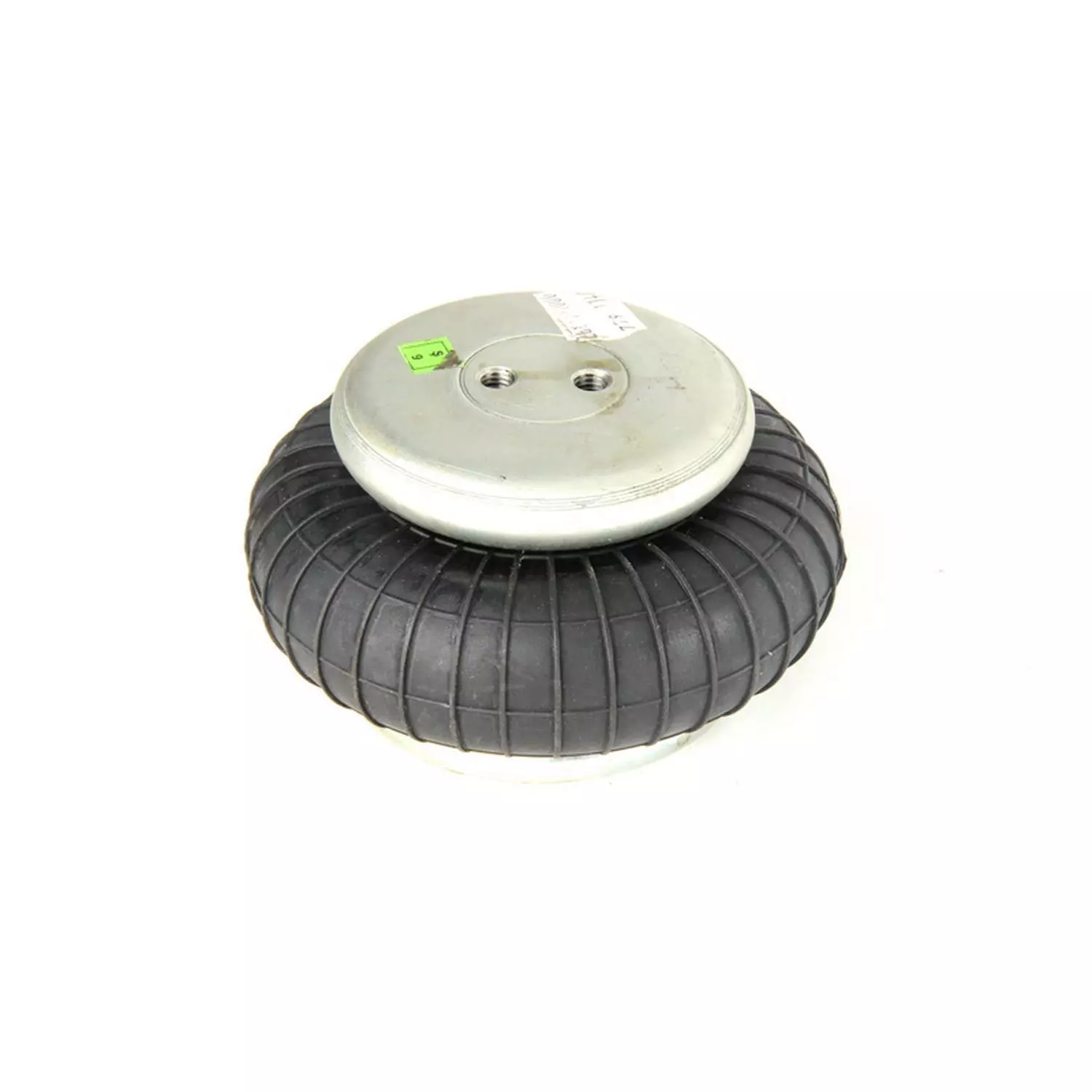
20
Dec
2024
Christmas closure
2024 has been a very busy year for us and there's still plenty left to do so this year our festive break will be rather short. Our Christmas/New Years opening hours will be:
December 23 - business open as usual
December 24 - CLOSED (calls will be answered by our call centre staff 9am - 3pm)
December 25 - CLOSED (no calls, you're welcome to email 😊)
December 26 - CLOSED (no calls, you're welcome to email 😊)
December 27 - CLOSED (no calls, you're welcome to email 😊)
December 30 - business open as usual
December 31 - business open as usual
January 1 - CLOSED (no calls, you're welcome to email 😊)
January 2 - business open as usual
Please note that our call centre staff cannot assist beyond taking messages and we won't be able to do any callbacks before Dec 30. Emails will not be monitored between Dec 24-26. There will be limited email support available on Dec 27.
What if you want to place an order? Automated in stock orders placed via our website will be dispatched over the Bank Holiday period but if something is needed urgently please email us beforehand. If you need to pay by bank transfer (trade customer, ordering from abroad) and require an invoice, please let us know which product/-s you require, you would also need to email us your contact details (phone number and delivery address). Made-to-order items will be manufactured in the New Year.
We know that many customers install products over the festive period so if you require technical assistance then please email us at ENQUIRIES@AIRRIDE.UK using the subject 'Technical' so we could spot and get back to you quicker.
We would like to thank all our customers and hope that you're thoroughly enjoying your genuine AirRide products. As for those customers whose orders we're currently manufacturing... we're looking forward to dispatch them to you soon! In the meantime, we wish everyone a Merry Christmas and a Happy New Year!


28
Nov
2024
Cold Weather and Air Suspension Systems: What You Need to Know



Air suspension systems enhance ride comfort and vehicle adaptability but face challenges in extreme temperatures. In cold weather, moisture can freeze within the system, causing blockages in airlines, valves, and fittings. To prevent this, it's essential to drain the air tank regularly, use airbrake antifreeze, and install water traps or air dryers to remove moisture. Additionally, rubber components like air bags become less elastic in low temperatures, increasing the risk of cracks or brittleness. Utilizing subzero-rated air bags and conducting regular inspections can mitigate these issues. Conversely, hot weather can accelerate rubber degradation and cause compressors to overheat. To address this, ensure proper ventilation for the compressor, inspect rubber components for heat-related damage, and minimize prolonged heat exposure by parking in shaded areas. Regular maintenance and seasonal adjustments are crucial to maintaining the reliability and performance of air suspension systems year-round.
Air suspension systems are a game-changer for ride comfort and vehicle adaptability, but cold weather can present unique challenges - especially for retrofit or aftermarket systems. These challenges primarily arise from two factors: moisture freezing inside the system and reduced elasticity of rubber components in low temperatures. Proper maintenance and preparation can help you ensure your air suspension system functions reliably, even in the harshest winter conditions.
Key Challenges and Solutions
1. Moisture Freezing Inside the System
Condensation is a natural by-product of air compression, but in cold weather, any moisture inside your system can freeze, leading to blockages in airlines, valves, and fittings.
How to Prevent Freezing Issues:
-
- Drain the Air Tank Regularly: Water accumulates in the tank over time. Draining it monthly - or more often in humid climates - prevents water buildup that could freeze.
- Add Airbrake Antifreeze: Specifically designed for pneumatic systems, airbrake antifreeze can be added to the airlines to prevent freezing in extreme conditions. This is especially important if your vehicle is used in subzero climates.
- Install a Water Trap, Dryer, or Cooling Coil: Water traps capture condensation before it enters the airlines, while air dryers actively remove moisture. Cooling coils can also help by condensing and collecting water vapor before it freezes. These are effective upgrades to ensure a dry air supply year-round.
2. Reduced Elasticity of Rubber Components
At low temperatures, rubber becomes less elastic, which can impact the flexibility and performance of air bags.
How to Maintain Rubber Components:
- Use Branded, Subzero-Rated Air Bags: Most high-quality branded air bags are rated for temperatures between -30° C and 70° C, making them suitable for year-round use. Choose air bags with these ratings to ensure durability in freezing conditions.
- Inspect Regularly for Damage: Check for cracks, hardening, or brittleness in the air bags and hoses. Catching issues early can save you from unexpected failures in extreme weather.
Real-World Examples: Cold Climates and Air Suspension Success
Air suspension systems are not limited to mild climates. Vehicles like Range Rovers and Bentleys, which often come with factory-installed air suspension, are designed to operate in freezing conditions. Additionally, many buses, lorries, motorhomes, and 4x4s use air suspension in cold environments, such as Russia, the Baltic States, and ski resorts.
The key to reliability in these conditions is proper moisture control and quality components. With regular maintenance, freezing issues can be entirely avoided - even in temperatures as low as -30° C.
Preparing for Summer: Seasonal Adjustments
While winter presents challenges, hot summer conditions also demand specific maintenance.
Why High Temperatures Can Be Problematic:
- Heat accelerates rubber degradation, making cracks and hardening more likely.
- Compressors can overheat if ventilation is inadequate, leading to reduced lifespan or performance issues.
How to Prepare for Summer:
- Inspect Rubber Components: Check for cracks, hardening, or other signs of degradation caused by heat exposure. Replace any components showing wear.
- Ensure Proper Compressor Ventilation: Make sure the compressor is installed in a location with adequate airflow. If necessary, add ventilation or cooling fans.
- Minimise Prolonged Heat Exposure: Parking in shaded areas or using sunshields can help protect the system from excessive heat during hot weather.
Pro Tips for Year-Round Air Suspension Maintenance
Seasonal maintenance is not just about weatherproofing - it’s about adapting your system to the challenges of your specific environment. By taking a proactive approach, you can maximise the performance and lifespan of your air suspension system, regardless of the season.
Key Takeaways:
- In winter, focus on moisture control and subzero-rated components.
- In summer, prioritise ventilation and heat protection for rubber components and compressors.
- Regular inspections and adjustments ensure your system stays reliable year-round.
With these tips, air suspension systems can be used confidently all year round - whether you're navigating icy roads to a ski resort or enduring sweltering summer heat.
20
Nov
2024
Bags for Coilovers
Bags for Coilovers: Can We Help?
We’ve recently noticed a surge in inquiries about air bags for coilovers. While this is a question we’ve been asked occasionally in the past, the recent spike in interest appears to have coincided with the closure of a competitor that previously supplied these products.
The Short Answer
Can we help? The short answer is no. In most cases, it’s easier, more reliable, and more cost-effective to invest in a dedicated air suspension kit rather than trying to adapt coilovers with air bags.
The Longer Answer
Air bags for coilovers present several challenges that make them less than ideal for road use:
- Ride Quality Issues: Coilovers paired with air bags often have spring and damper rates that are too stiff or unsuitable for comfortable road use. Our focus has always been on achieving excellent ride quality alongside adjustability for lowering, which coilover setups rarely achieve when combined with air bags.
- Threaded Coilovers and Reliability: Many coilovers have threaded bodies for height adjustment, which can be problematic when paired with air bags. Over time, these threads can become unreliable, leading to leaks or alignment issues.
- Space Constraints: Vehicles often lack sufficient space for the proper diameter air bags that would provide a comfortable ride. Narrow or undersized bags may fit, but they won’t deliver the performance or durability needed for real-world driving conditions.
- Universal Air Bag Option: While we do sell a universal air bag that doesn’t rely on sealing to fragile coilover threads, this option is highly limited by space constraints. It’s rarely a practical solution for heavy vehicles, and although 6 inches in diameter does not perform like a 6 inch bag. It works brilliants on lighter vehicles when no direct fit application is available. Available HERE.
Our Recommendation
If you’re considering adding air bags to your vehicle, we strongly recommend converting to a full air suspension system. Air suspension kits are purpose-built, offering benefits that retrofitted systems with threaded bodies cannot match.
- Matched Air Bags: The air bags are specifically matched to the application, ensuring the correct size, durability, and performance for the vehicle.
- Calibrated Damper Rates: The damper rates are designed for air bags, not coil springs, providing optimal ride quality and adjustability.
- Compatible Mounts: The bag mounts are designed to seat securely against the damper body, ensuring compatibility and proper function.
By contrast, retrofitting air bags to coilovers is often a hit-and-miss process. The original components were not designed for air bags, leading to unreliable sealing and inconsistent performance. In addition, the limited compatibility of bag sizes can compromise both ride quality and safety.
Converting to a purpose-built air suspension system delivers superior ride comfort, reliable performance, and full adjustability for both height and handling.
Need Help Choosing the Right Kit?
Our team is here to guide you in selecting the best air suspension solution for your vehicle. Call us or email us - we’ll be happy to assist you!
